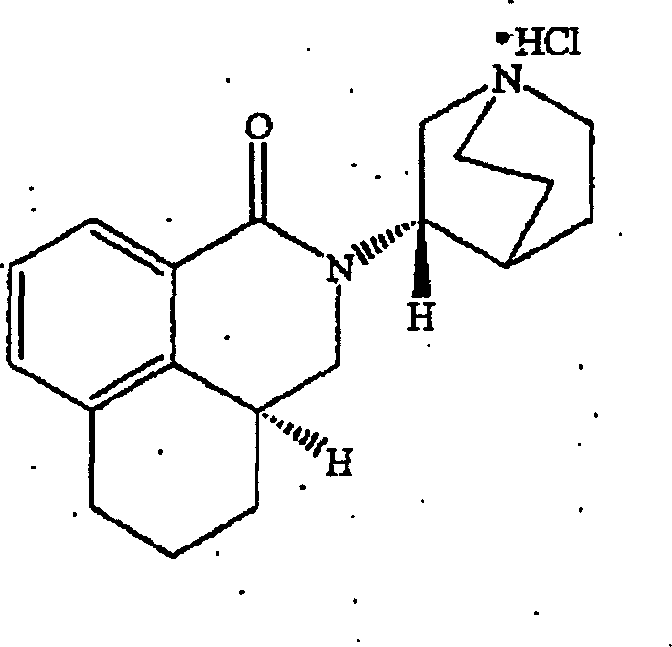Method of treating post operative nausea and vomiting
A postoperative, surgical technique applied in the field of postoperative nausea and vomiting and general vomiting, which can solve problems such as unsatisfactory prescription needs, expensive receptor competitive antagonists, and increased burden on the health care system
- Summary
- Abstract
- Description
- Claims
- Application Information
AI Technical Summary
Problems solved by technology
Method used
Image
Examples
Embodiment 1
[0074] Example 1 : Prophylaxis of PONV with a single intravenous dose of palonosetron
[0075] A study aimed to test the efficacy and safety of 5 doses of palonosetron administered intravenously in preventing postoperative vomiting and nausea. A total of 381 women, aged 24-80 years, scheduled for abdominal or vaginal hysterectomy, were enrolled in the study with ASA physical fitness index I or II. All patients received balanced general anesthesia including N 2 O plus one opiate. The study drug, palonosetron, was administered over 30 seconds through the peripheral IV line at the time of the final skin closure during the surgical procedure.
[0076] placebo
0
(n=62)
0.1
μg / kg
(n=47)
0.3
μg / kg
(n=67)
1
μg / kg
(n=62)
3
μg / kg
(n=67)
30
μg / kg
(n=67)
with CR% *
p.value a
19%
-
34%
N / A b
34%
0.051
44%
0.004
30%
0.174
45% ...
Embodiment 2
[0091] Example 2. Oral Palonosetron for PONV
[0092] The study was conducted to test the efficacy, safety and pharmacokinetics of 5 doses of palonosetron administered orally in the prevention of postoperative emesis and nausea. A total of 351 patients (308 women, 43 men) aged 19-75 were scheduled to undergo elective laparoscopy, and patients with ASA physical fitness index I and II were selected to participate in the study. All of the above patients received balanced general anesthesia including N 2 O plus one opiate.
[0093] The dose of palonosetron was determined by the patient's body weight at the time of screening diagnosis, rounded to the nearest kilogram. Dilute each dose to 25ml by adding sterile water to the measuring cup, then rinse the measuring cup with 25ml of sterile water, and the rinsed liquid is also given to the patient. Study drug was administered 2 hours before anesthesia for surgical procedures requiring nasogastric aspiration and 1 hour before anest...
Embodiment 3
[0107] Example 3. Dosage Forms for Intravenous Administration
[0108] Table 8: Representative IV Dosage Forms
PUM
| Property | Measurement | Unit |
|---|---|---|
| concentration | aaaaa | aaaaa |
Abstract
Description
Claims
Application Information
 Login to View More
Login to View More - R&D
- Intellectual Property
- Life Sciences
- Materials
- Tech Scout
- Unparalleled Data Quality
- Higher Quality Content
- 60% Fewer Hallucinations
Browse by: Latest US Patents, China's latest patents, Technical Efficacy Thesaurus, Application Domain, Technology Topic, Popular Technical Reports.
© 2025 PatSnap. All rights reserved.Legal|Privacy policy|Modern Slavery Act Transparency Statement|Sitemap|About US| Contact US: help@patsnap.com

